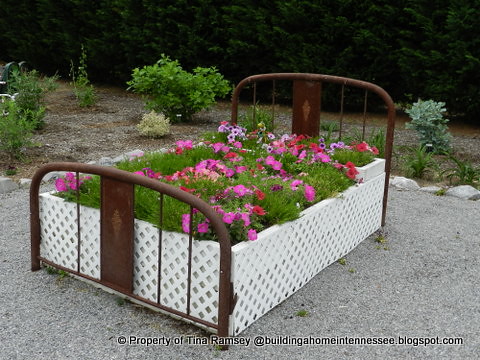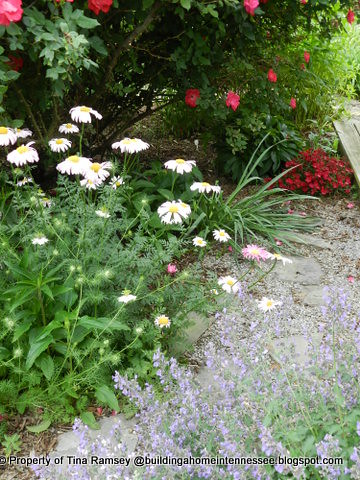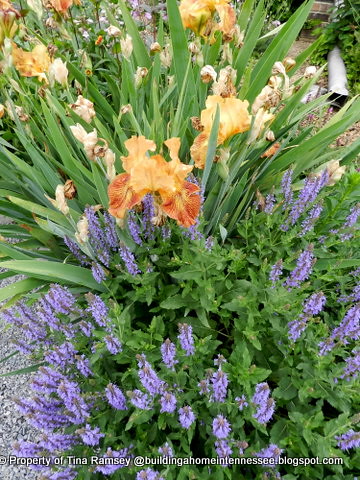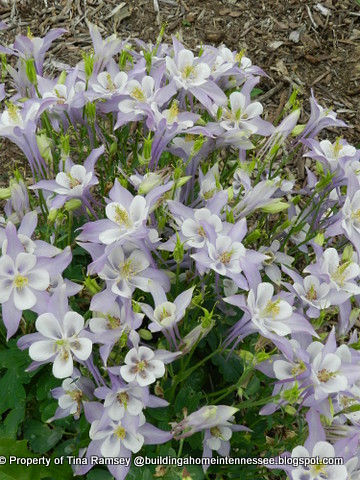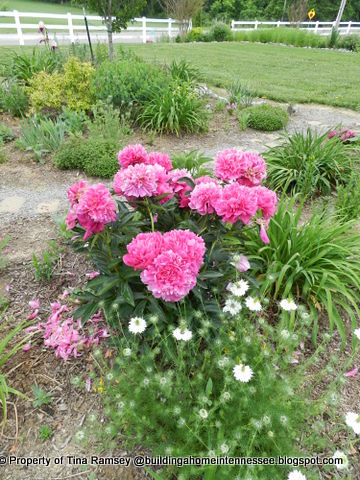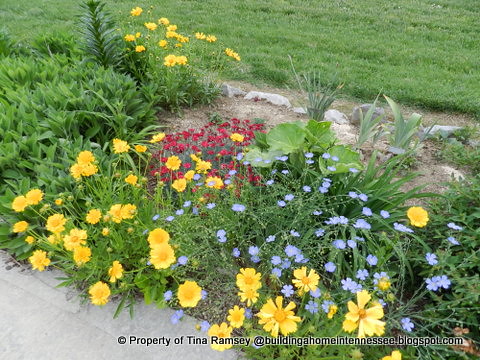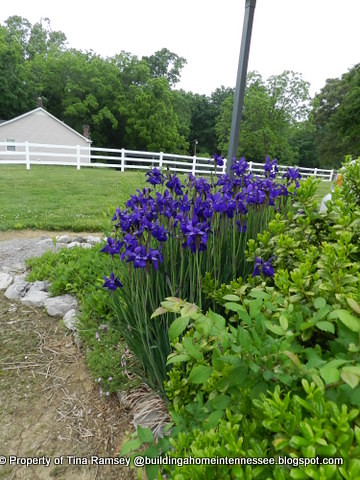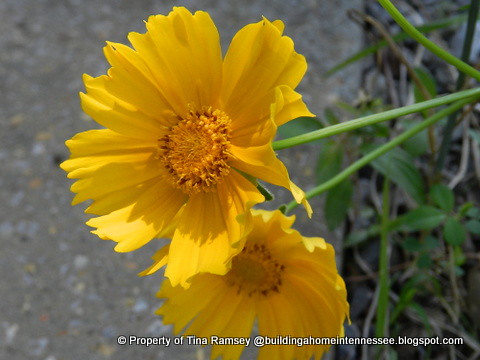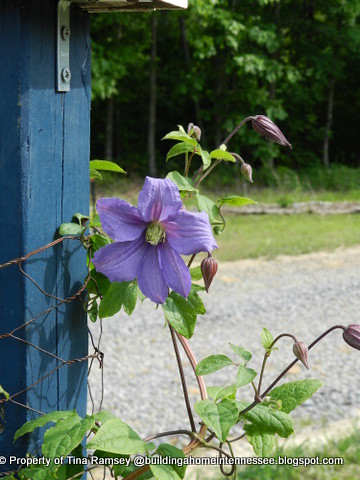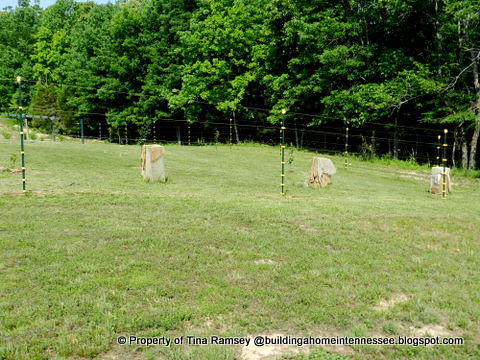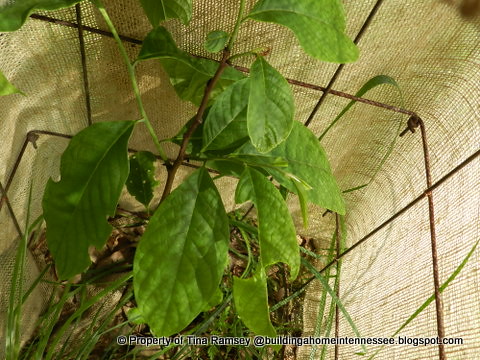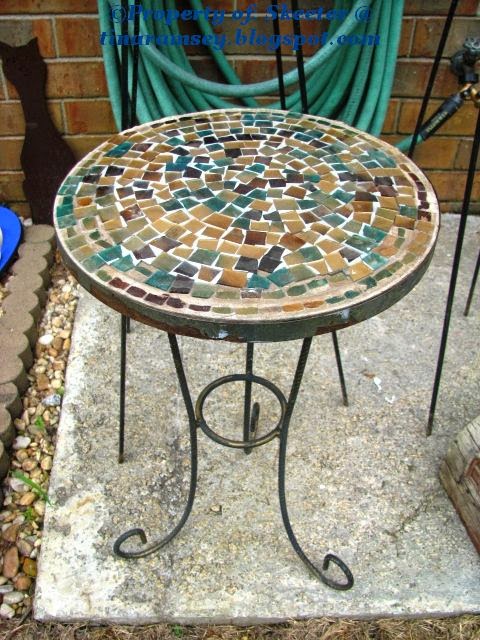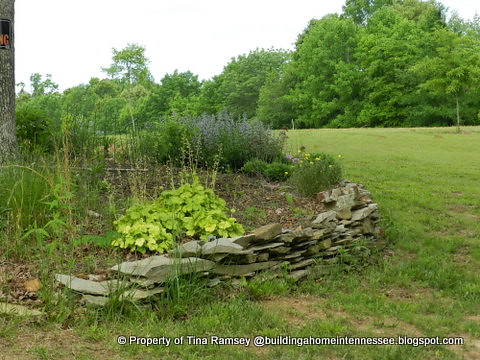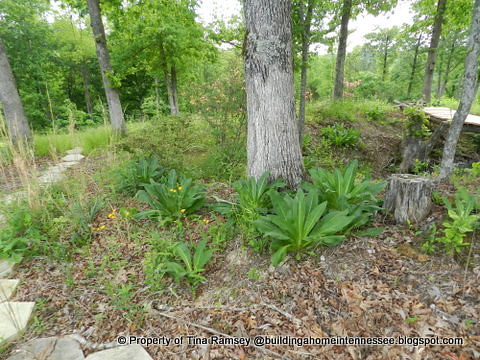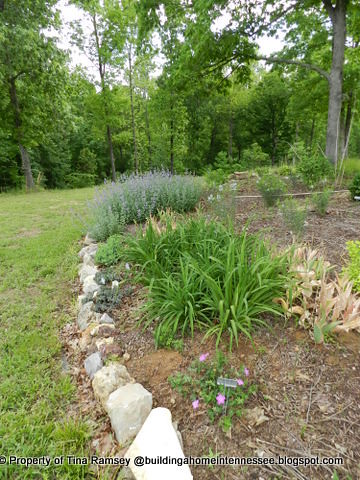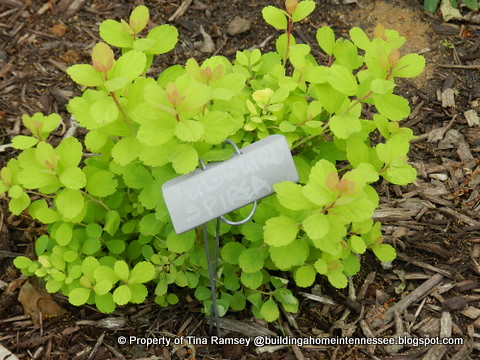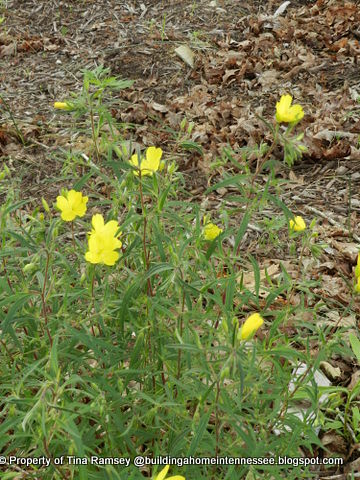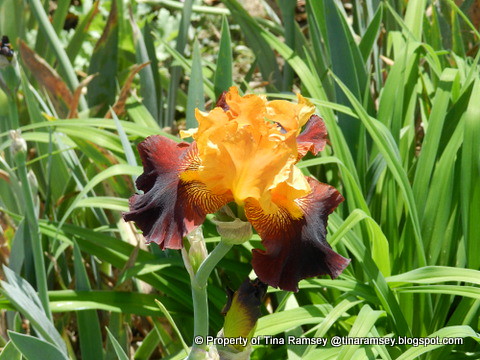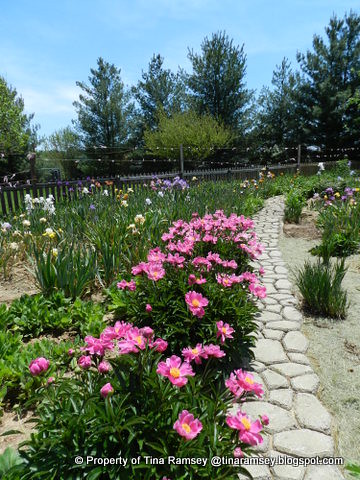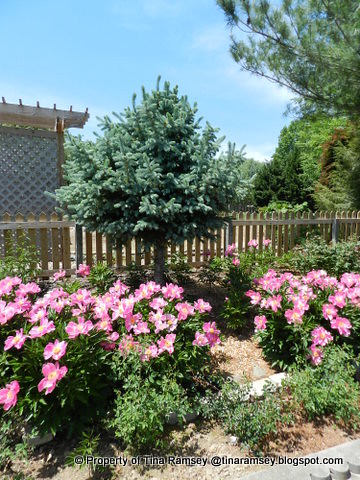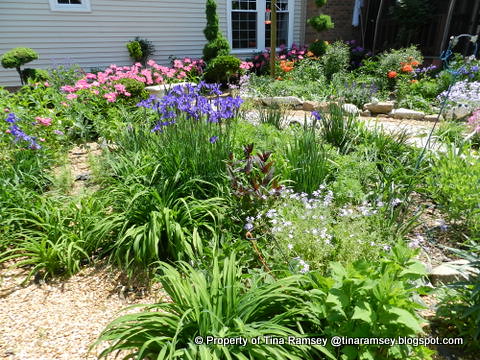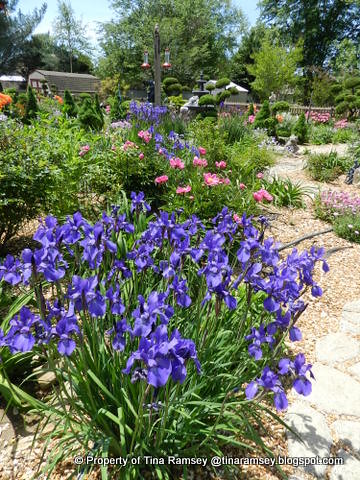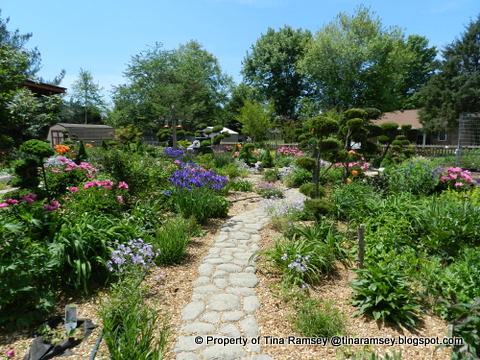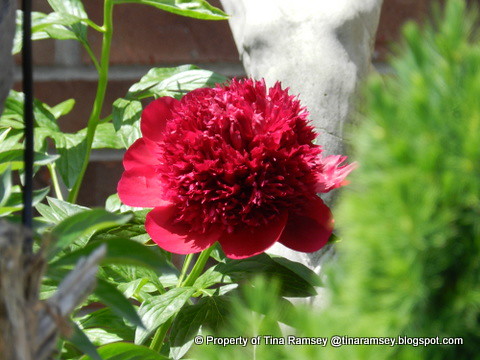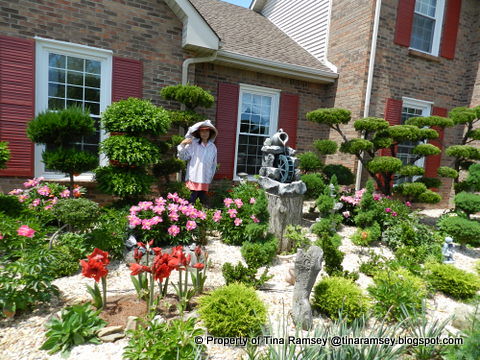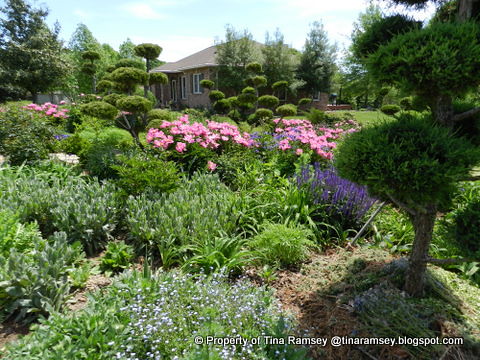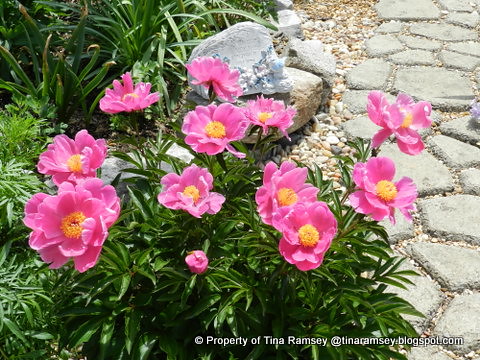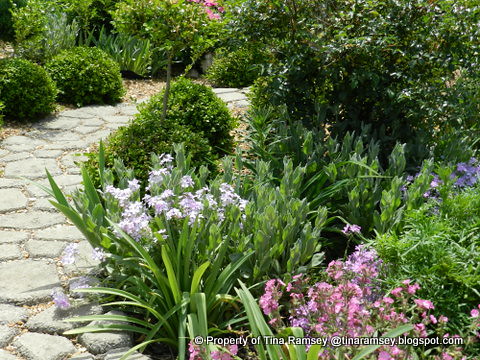
As promised here are some more beautiful views in Christy M.'s garden. Views, especially the long shots, are important to me. It is nice to take in the whole garden, take in parts of the garden, and even to take in macro shots of the plants in a garden but for me I want to be wowed by my immediate surroundings. I want texture, color, and beauty. Christy's garden meets all of this and more.
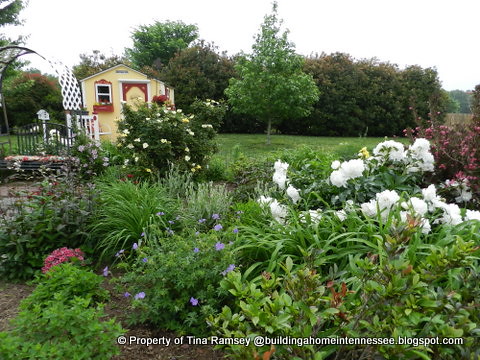
Don't you just love it?
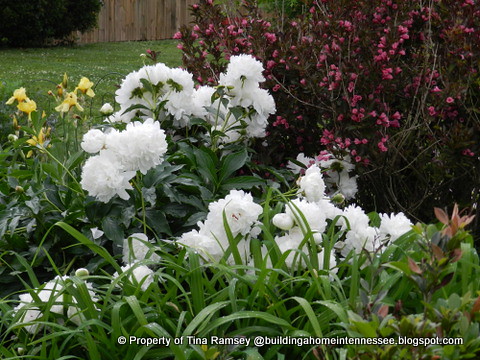
Peonies, weigelia, and irises-what a classic combination that is so beautiful.
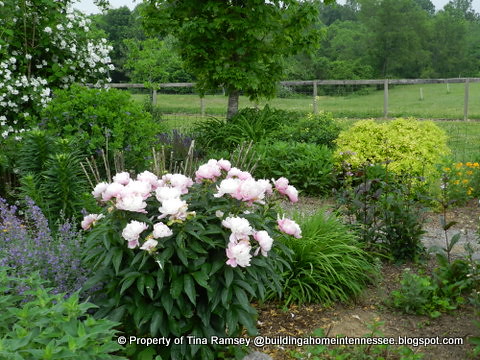
More of those views of color, texture, height differences, and defined plants.
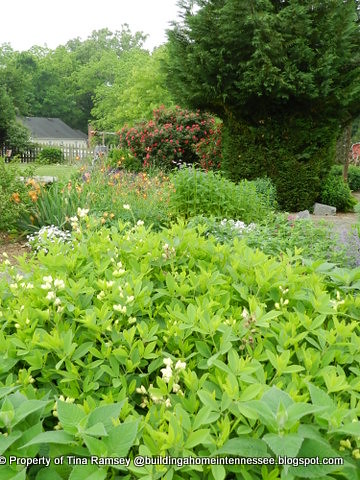
Here your eye is drawn past the deutizia to the rose in the distance. Wow.

And the famous beloved garden cottage. This year's color theme in Christy's garden will match this cottage. Look for lots of red and yellow if you tour Christy's garden on June 14th with the Clarksville Montgomery County Master Gardeners.
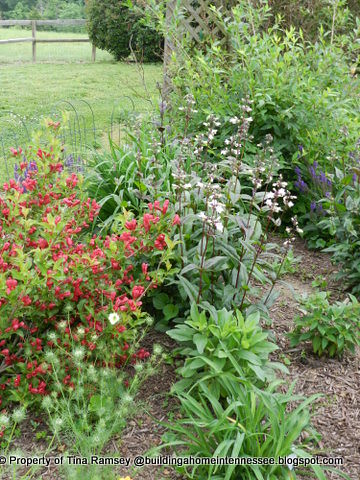
Penstemon, weigelia, and salvia.
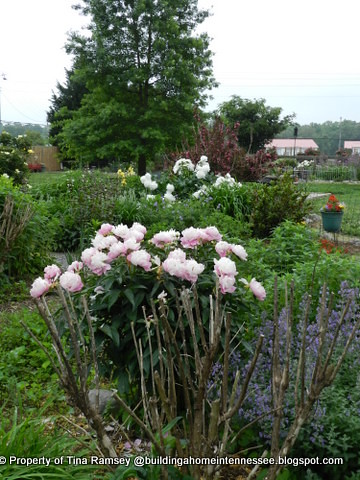
More peonies and long views.
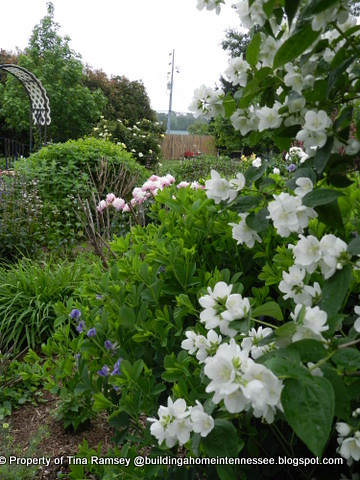
It takes my breath away. This is an old fashioned mock orange shrub. Word of warning, buy mock oranges when in bloom. Buying a mock orange in bloom will not guarantee you get a shrub that smells good but it can at least help. Many of the mock orange shrubs you can buy today do not have the wonderful scent they were known for in our grandparents day.
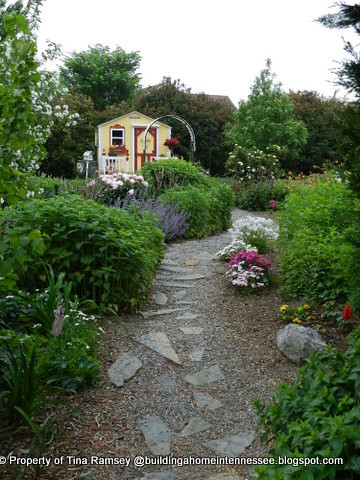
Finally, one last long shot at the country garden cottage in Christy's garden....
in the garden....
